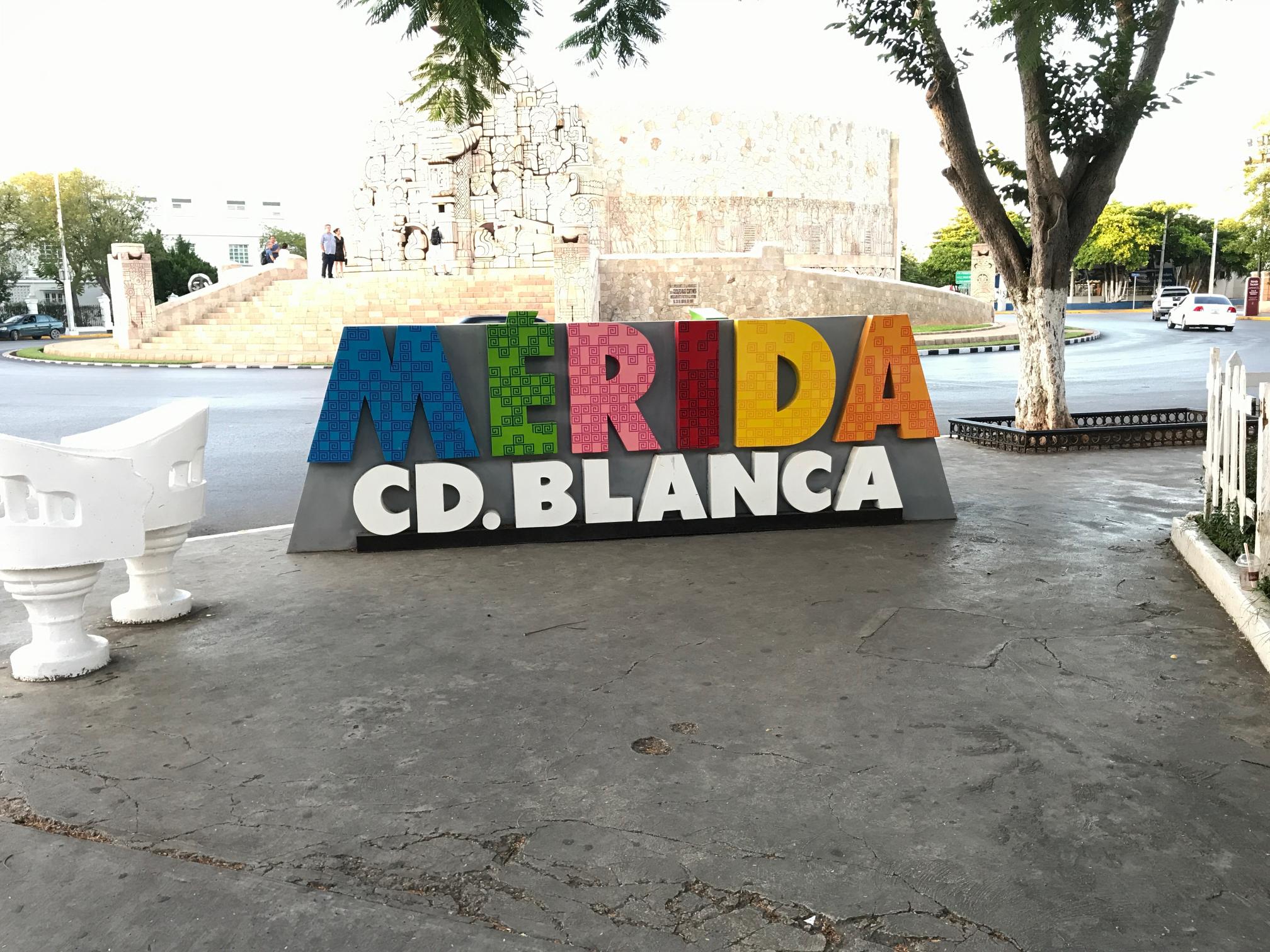My last full day in Mérida was mostly devoted to the Mayan ruins at Uxmal. These ruins are a a little more than an hour's drive south of the city, but thankfully I'd found a ride out there.
Sunday, November 5, 2017
It probably goes without saying that being able to speak Spanish helps a lot while traveling in Mexico, even if, like me, you speak it as a second language with an obvious accent. I hadn't mentioned this in the last blog entry, because I don't remember exactly where or when this happened, but at some earlier point on this trip I took a ride in a taxi driven by an old man who must have been at least 70 and spoke no English. During the ride I mentioned that I was planning to visit Uxmal the next day and he generously offered to take me there. So on Sunday morning he met me outside my hotel and off we went to Uxmal!
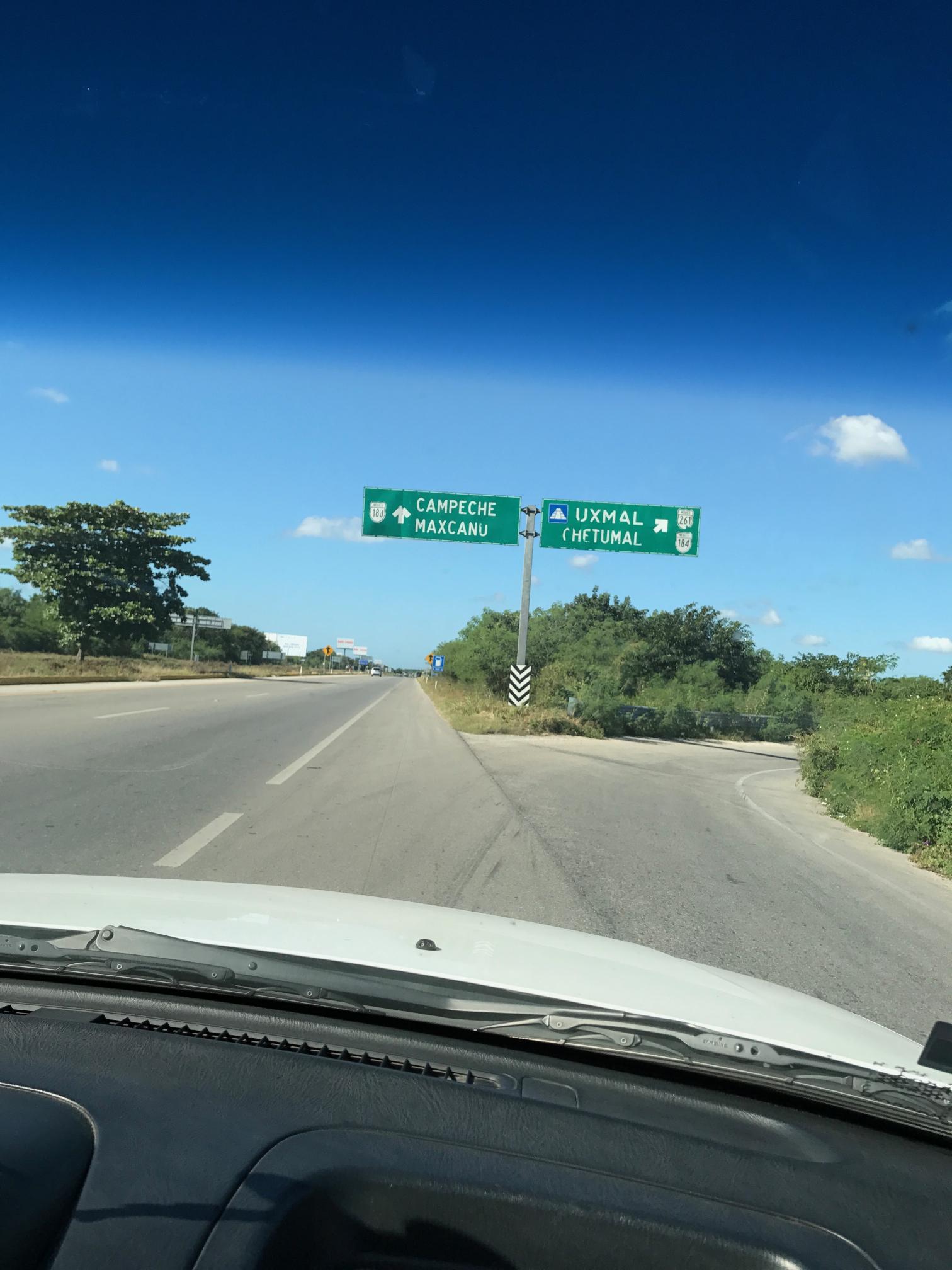
First thing I learned on the way was the authentic pronunciation of "Uxmal." It seems that the letter x, in Mayan, represents our "sh" sound, so Uxmal is pronounced "ooshmal."
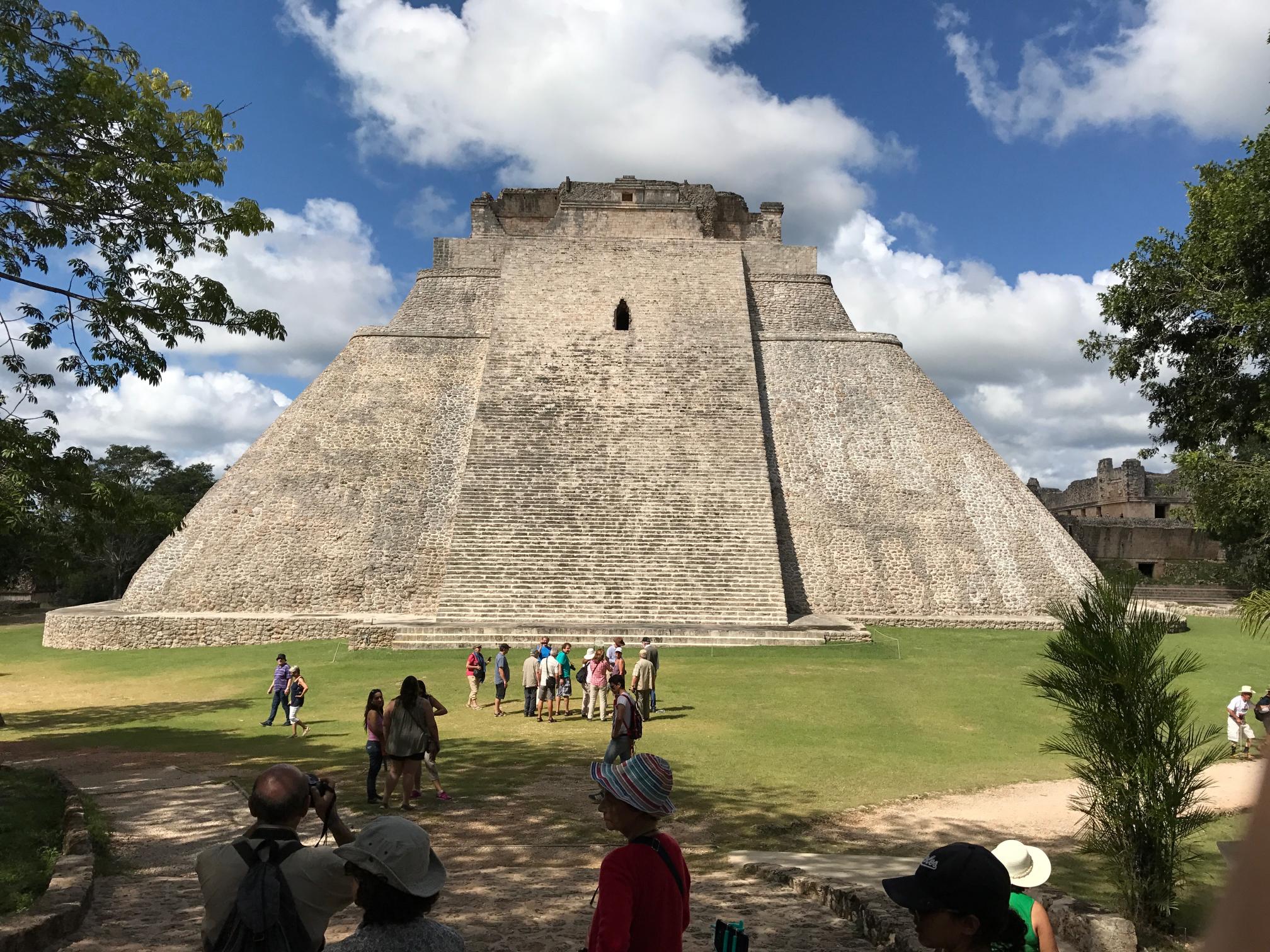
The first thing you see upon entering Uxmal is this, the Pirámide del adivino, which I've seen variously translated as "Pyramid of the Soothsayer" and "Pyramid of the Magician." Unsurprisingly, you're not allowed to climb these steps. Also, notice all the other tourists here? While strolling through the ruins I passed by quite a few guided tour groups, and I overheard tours in, among others, English, French, and even Chinese. Clearly Uxmal attracts tourists from a lot farther away than where I came from.
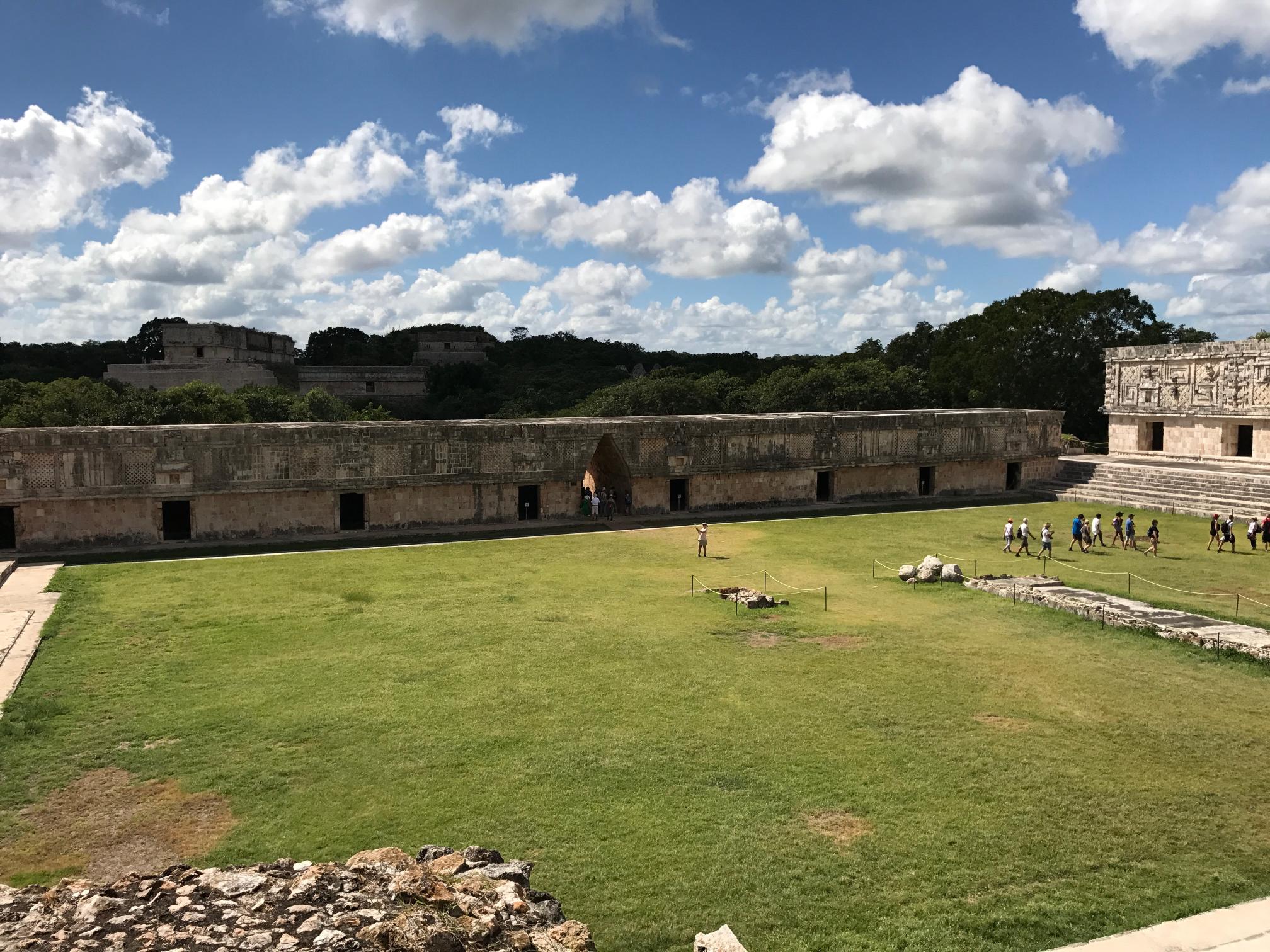
Cuadrángulo de las Monjas, or Quadrangle of the Nuns. It doesn't actually have anything to do with nuns; the Spaniards only named it thus because it reminded them of a nunnery. It was built sometime around the 10th or 11th century.
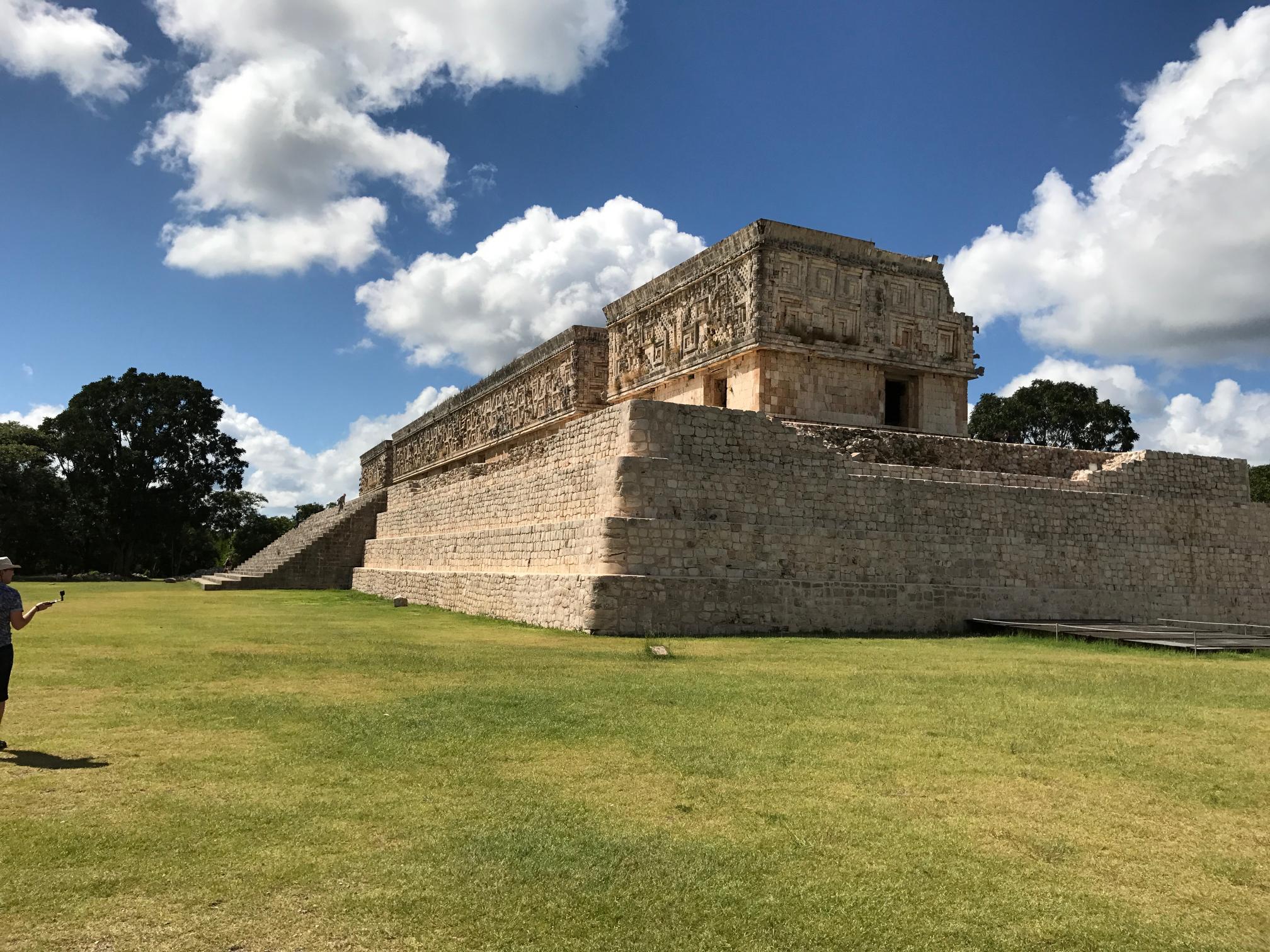
This large edifice was the Governor's Palace...
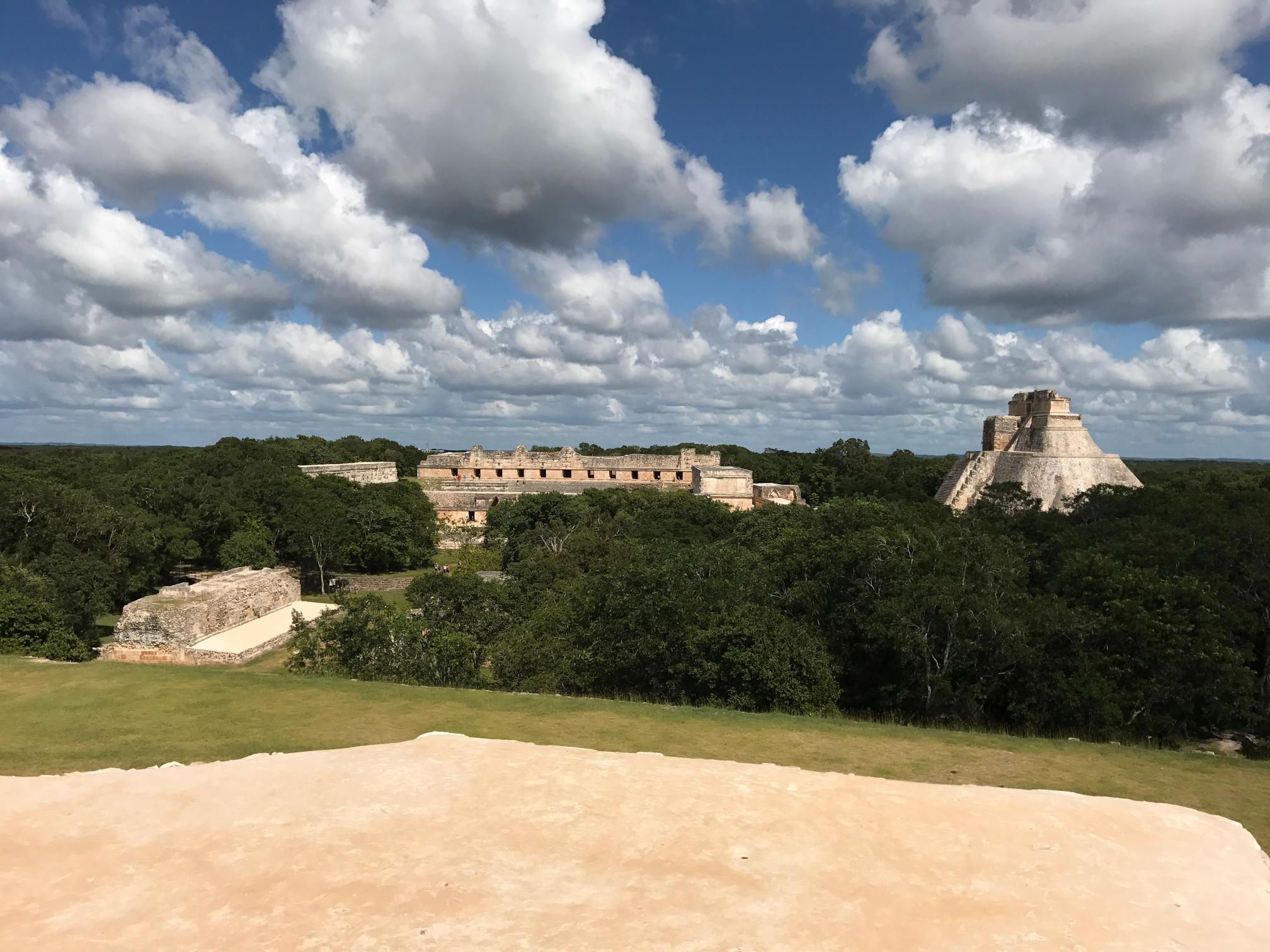
...from which you can get a pretty good view. There's the Pyramid of the Soothsayer on the right, the Quadrangle of the Birds (Cuadrángulo de los Pájaros) in the center, and the ball court to the left.
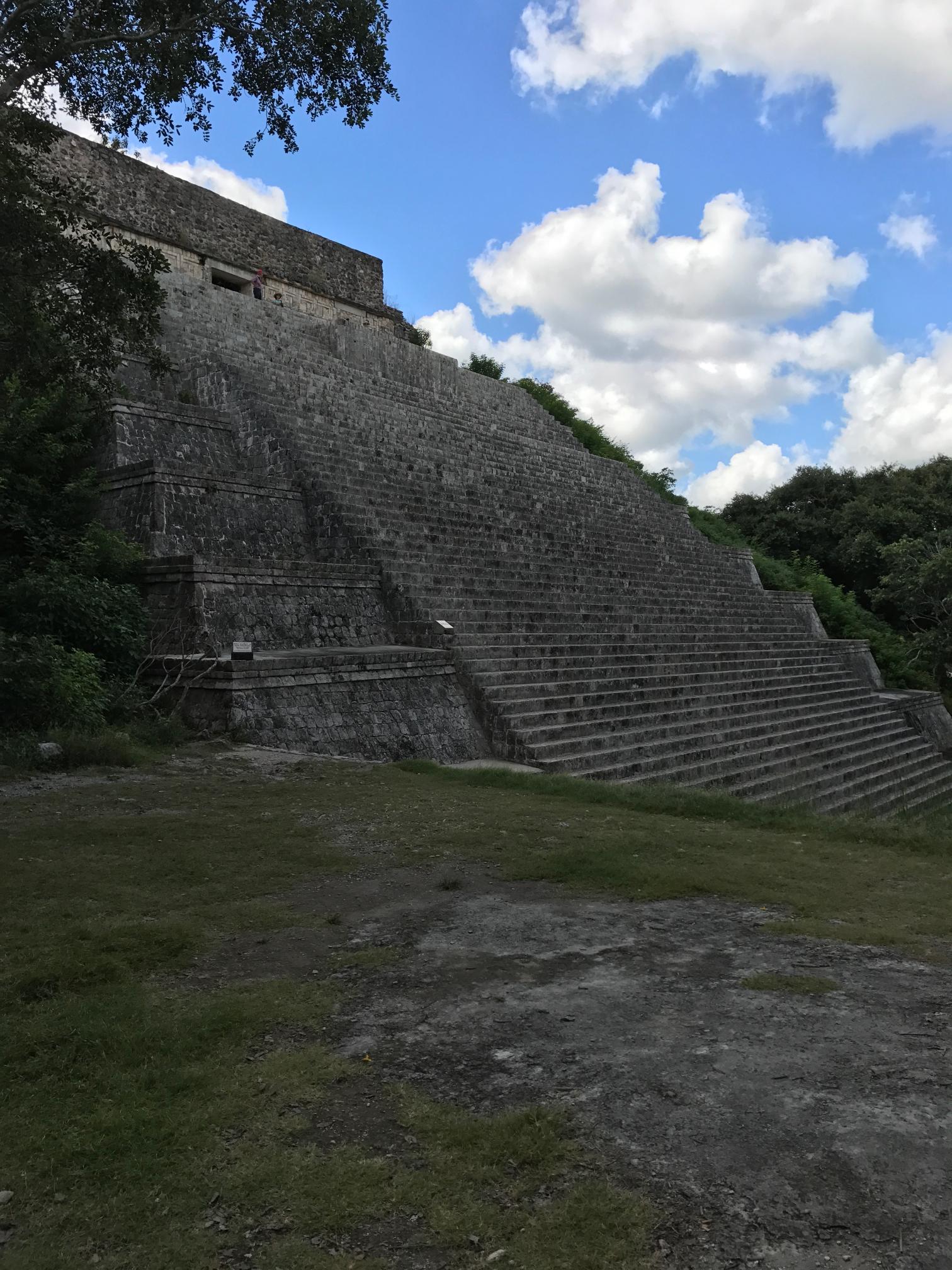
While the steps of the first pyramid we saw, that of the Soothsayer, may be off limits, you *can* climb the steps of this one, the Great Pyramid, which is right next to the Governor's Palace. According to a plaque nearby, it was built in the 8th century.
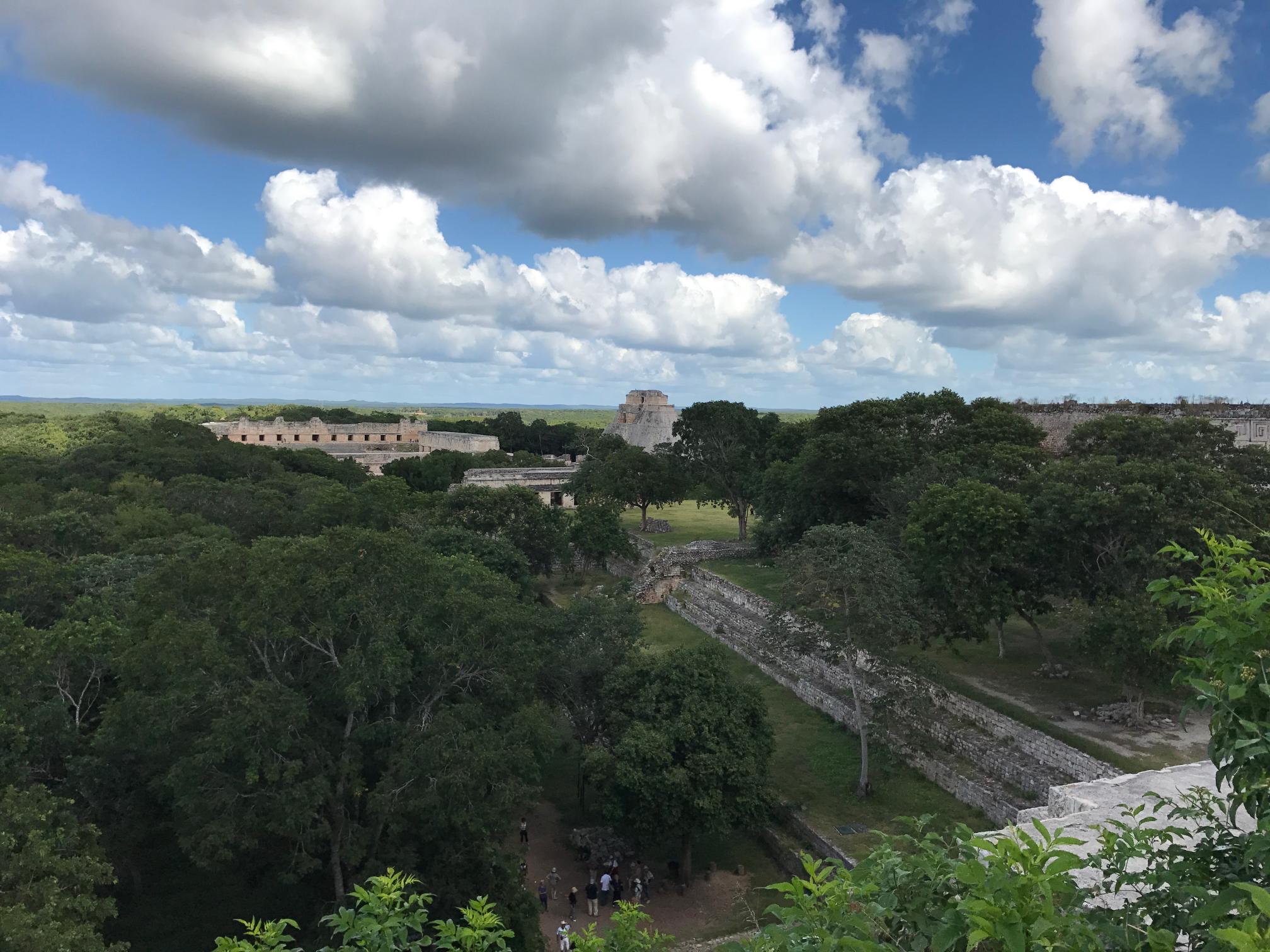
Some visitors might not find these to be the easiest steps to ascend, but you sure can see a lot from the top of the pyramid.
Through all these ruins and the museum we've seen how the Maya, like the Aztecs and the Incas, were in many ways just as advanced as comparable societies of the day in Europe, Asia, and Africa. So how did they get conquered so easily? As Jared Diamond in Guns, Germs, and Steel and Peter Frankopan in The Silk Roads point out, it came down to a lack of weapons technology and a lack of immunity to disease.
Back then, European nations were constantly at war. Ever since the fall of the Roman Empire, someone in Europe was fighting someone else; Muslim invasions of France and Spain, endless squabbling between French and German petty fiefdoms, the Hundred Years' War between France and England, the Crusades, Viking raids all over the place...when the Spanish first arrived in America, they had just spent the last 800 years battling the Moors. Native American societies just didn't have this kind of history. Because of the constant warfare, Europeans were always inventing newer and more lethal ways of slaughtering each other; necessity is the mother of invention, as the saying goes. Not only that, but there were no horses in the Americas at that time, purely due to accidents of geography.
So when the conquistadores first stepped off their ships they were armed with swords, halberds, cannons, gunpowder, bows and crossbows, rudimentary pistols, shiny plated armor, and horse-mounted cavalry, while the people they met didn't have much more than stone-tipped spears which had worked for them well enough before that point. Add to that the fact that the Spaniards' bodies were crawling with diseases for which the Americans' bodies had no resistance, and the Americans didn't stand a chance.
Back to the present...after lunch at Uxmal's café, it was another hour-or-so taxi ride back to Mérida. During this ride I just happened to mention that I was flying out before dawn the next day, and this driver also had no problem taking me to the airport that early! I was really lucky to have first run into this taxi driver when I did.
That evening I walked back to the Zócalo to check out some more local cuisine for dinner. First I had a salbute, which was kind of like a taco, but not. I'm not sure how else to describe it. They were usually served two at a time, but I only had one because I wanted to save room for whatever else I could find.
And the next thing I found, that I had saved room for, was a marquecita. This is made from a flour tortilla which is spread out and flattened to be thinner than paper. On this tortilla they'll put whatever toppings you want, and they have a wide selection. I got Nutella and some kind of grated white cheese on mine. Then they roll it up, with the resulting roll being about a foot and a half long and an inch wide, and then briefly bake it to harden it. Good luck finding one of these at a Mexican restaurant in the States; the next week I went to one of my Spanish meetup groups in San Antonio and no one there had even heard of marquecitas or salbutes.
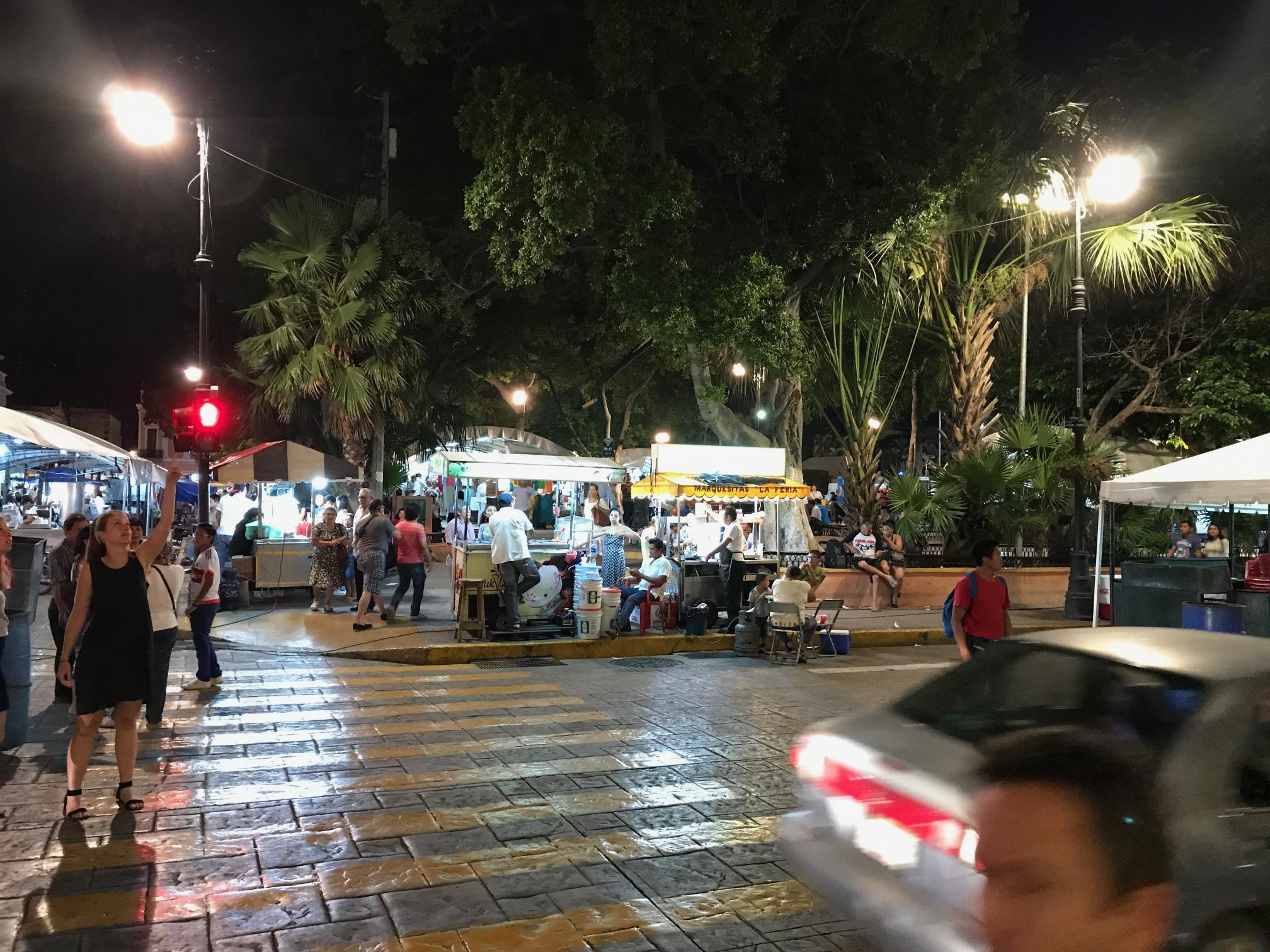
The stand where I got the marquecita is just right of center.
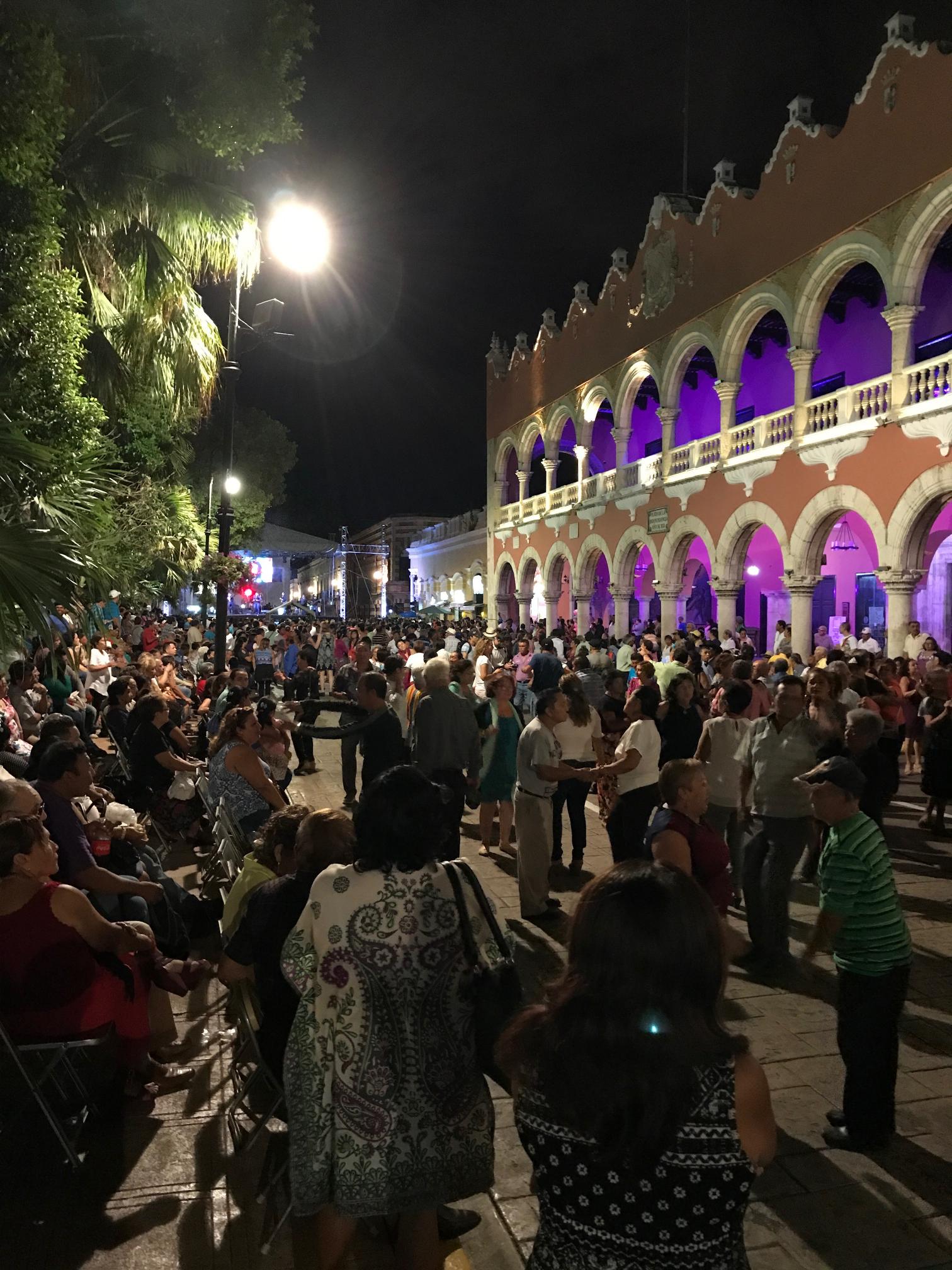
Salsa dancing in the Zócalo. Today I can't look at this without thinking "they're not socially distanced enough."
I didn't have much time left that night, after all I had to go to bed early because of my early flight out the next morning. I had to stop by La Bierhaus one last time, where I had a Mönchshof Original Pils and a local Yucatán brew, Cuerno de Toro ("Bull Horn") oatmeal stout.
Monday, November 6, 2017
I spent most of this day on three flights. It began well before the sun rose, with the previous day's generous taxi driver meeting me outside the Hotel Flamingo while most of the rest of the city was still asleep. I sure hope I gave this guy a good tip; I'd like to think I did but I just can't remember because of how not awake I was at the time.
So first was a short Interjet flight from Mérida to Mexico City. During this trip I flipped through the airline magazine one always finds on planes, and this was a bit more interesting than most other airlines' magazines. The cover story was about Tijuana, the city across the border from San Diego. I don't know when I'll get the chance to go there but I mentally added it to my ever-growing travel bucket list.
While passing through the Mérida and Mexico City airports again, I was really struck by their relatively small sizes, especially considering how many people live in those cities. I started to formulate a theory in my mind about how one might be able to measure a country's wealth and standard of living based on this: how many airports serve that country's major metro areas and how big are they?
The New York City area has three airports (JFK, La Guardia, and Newark) and I know from experience how huge JFK and Newark are. Ditto for Washington, DC (Dulles, Reagan, and Baltimore). Chicago, Los Angeles, and Dallas each have two. Across the pond, Paris has two, Berlin has two and is about to open a third, and London has no less than five airports! But Mexico City--the biggest and most populous city and metro area in North America, dwarfing every city I just mentioned--only has one airport, and it's a pretty modest one, little bigger than San Antonio's. Now, to be fair, when I was there it was overcrowded and they were in the process of expanding it. Mérida has a population of about 700,000 which is only slightly smaller than Omaha, Nebraska, but its airport is no bigger than Ibiza's. The most obvious explanation for this would be that fewer people in Mexico than in the US and Europe can afford air travel, thus there isn't as much demand for it in Mexico City and Mérida than in NYC and Omaha.
After finally fully waking up with coffee and breakfast in Mexico City, two more flights: Mexico City to Dallas/Fort Worth, and then DFW to San Antonio. Something unexpected and wonderful happened at DFW, my point of entry into the United States: after going through passport control and claiming my luggage, going back through security was a breeze because not only was the line thankfully short, but the body scanners were shut down so we just had to go through the metal detector. I didn't have to take my shoes or belt off!
But of course that wasn't the end of 2017's Mexican excursions. I was only back at work for four more days before I was on a cruise ship headed back in the same direction.
Other articles in this series:
- Yucatán 2017 Part 1 - First Impressions of Mérida
- Yucatán 2017 Part 2 - Mayan Museum and Half Marathon
- Yucatán 2017 Part 4 - The Cruise
